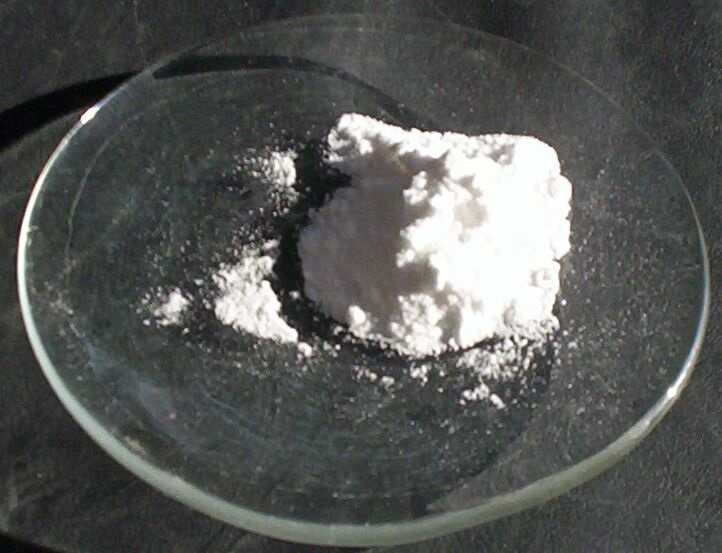We unleash your business potential by maximize the business innovation.
Send EmailLithium carbonate, Camcolit, Ceglution, Candamide, CP 15467-61, Carbolithium, Carbonic acid lithium salt (Li2CO3), 554-13-2
Lithium carbonate
CAS: 554-13-2
Molecular Formula: Li2CO3
Names and Identifiers
| Name | Lithium carbonate |
| Synonyms | Camcolit Ceglution Candamide CP 15467-61 Carbolithium Lithium carbonate Carbonic acid lithium salt (Li2CO3) Hematoxylin solution B according to Weigert |
| CAS | 554-13-2 |
| EINECS | 209-062-5 |
| InChI | InChI=1/CH2O3.2Li/c2-1(3)4;;/h(H2,2,3,4);;/q;2*+1/p-2 |
Physico-chemical Properties
| Molecular Formula | Li2CO3 |
| Molar Mass | 73.89 |
| Density | 2.11 |
| Melting Point | 720℃ |
| Boling Point | 1230℃ |
| Water Solubility | 13 g/L (20℃) |
| Solubility | Slightly soluble in water, 1 gram of this product can be dissolved in 78 ml of cold water and 140 ml of boiling water; soluble in dilute acid, insoluble in alcohol · |
| Appearance | White crystal |
| Storage Condition | Room Temprature |
| Sensitive | Easily absorbing moisture |
| MDL | MFCD00011084 |
| Physical and Chemical Properties | Properties white monoclinic powder. melting point 723 ℃ relative density 2.11 solubility slightly soluble in water (1.54 at 0 ℃; 100 at 0.72 ℃), insoluble in alcohol, soluble in acid. |
| Use | Used in semiconductor, television, atomic energy, ceramics, medicine, catalyst and other departments, also used for the preparation of lithium compounds |
Risk and Safety
| Hazard Symbols | Xn - Harmful |
| Risk Codes | R22 - Harmful if swallowed R36/37/38 - Irritating to eyes, respiratory system and skin. R41 - Risk of serious damage to eyes |
| Safety Description | S26 - In case of contact with eyes, rinse immediately with plenty of water and seek medical advice. S37/39 - Wear suitable gloves and eye/face protection |
Upstream Downstream Industry
| Raw Materials | Sodium carbonate Sulfuric acid |
| Downstream Products | Lithium hydroxide Lithium fluoride Lithium bromide Polyamide Resin Lithium sulfate Lithium chloride Lithium carbonate |
Nature
white monoclinic powder. Relative density 2. 11, melting point 723 ℃, slightly soluble in water (o ℃ 1. 54;100 ℃ 0.72), insoluble in alcohol, soluble in acid. Below 600 ° C on the thermal stability, 618 ° C began to partial decomposition into lithium oxide and carbon dioxide.
Preparation Method
- brine Comprehensive Utilization method: Brine after extraction of barium chloride lithium-containing feed liquid to remove calcium and magnesium ions in the feed, hydrochloric acid acidification, evaporation to remove sodium chloride, and then after the removal of iron, then excess soda ash was added to precipitate lithium carbonate, which was washed with water, centrifuged and dried to prepare a lithium carbonate product.
- lime sintering method: spodumene concentrate (generally containing 6% of lithium oxide) and limestone are mixed by 1 t(25~3) mass ratio, mixed and ground, sintering at 1150~1250 ℃ generates lithium aluminate and calcium silicate, which are pulverized by wet grinding, leached out lithium hydroxide with washing liquid, filtered by sedimentation, the filter residue is returned or washed to remove residues, and the leaching solution is concentrated by evaporation, then sodium carbonate was added to generate lithium carbonate, which was centrifuged and dried to obtain a lithium carbonate product.
Use
is a raw material for the preparation of lithium compounds and metallic lithium. It can be used as an additive for electrolytic bath in aluminum smelting. It is widely used in glass, ceramics, medicine and food industries, and can also be used in synthetic rubber, dyes, semiconductors and military defense industries.
Safety
packed in plastic woven bags lined with polyethylene plastic bags, each with a net weight of 50kg. Store in a ventilated and dry place, and pay attention to the prevention of rain and water immersion. The bag should be prevented from breaking during transportation and handling, and should not contact with acid articles. Toxicity and protection: has obvious stimulating effect, first of all on the gastrointestinal
There is damage to the tract, kidney and central nervous system; The order of toxicity of lithiides is Li
